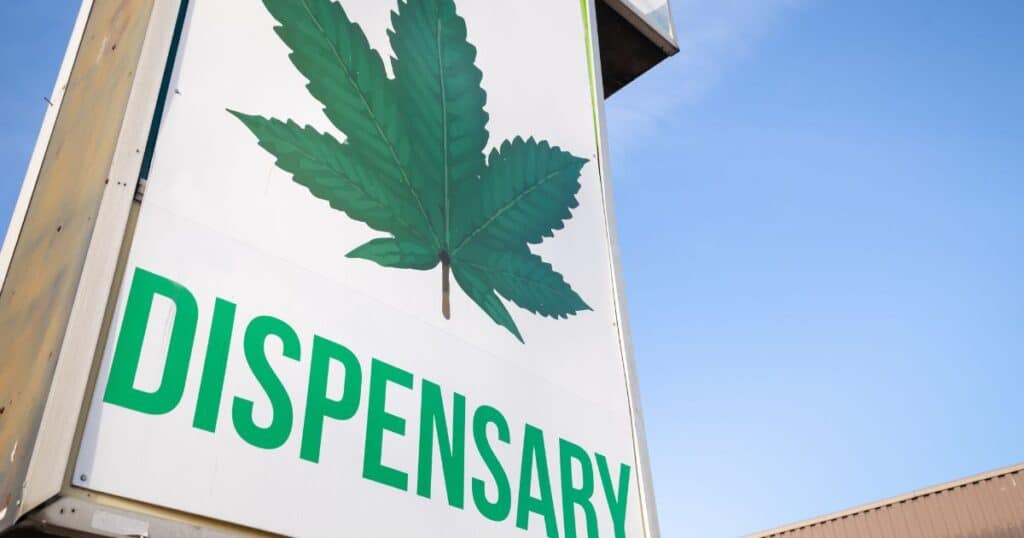The United States is undergoing a green revolution, and it’s not just the wake-up call for environmentalism; it’s the unmistakable surge of the cannabis industry in the country.
From the cannabis footholds of California and Colorado to the heartlands of Michigan and Oklahoma and the growing scene on the East Coast, marijuana is not just a growing market—it’s rapidly becoming a fixture of American culture, speech, and, most importantly, legislation.

Setting the Scene of Societal Acceptance
Long gone are the days when discussions around marijuana legalization were hushed tones relegated to the fringes of political and social discourse.
Today, a solid majority of Americans have flipped the script, advocating for the loosening, if not the complete removal, of cannabis prohibition.
According to a Pew Research Center article in 2022, nearly 88% of U.S. adults endorse marijuana legalization in some capacity, whether for medical or recreational use. Such broad acceptance has catalyzed rapid changes in state laws.
At present, 54% of Americans reside in states where recreational marijuana is legal, and an overwhelming 74% live where cannabis is allowed for either medical or recreational purposes.
The implications are enormous, and local economies are reaping the rewards. The transition of green filtration across states is not just a watershed moment; it’s a floodgate that could bring significant changes to our views and laws on cannabis in this nation.
Dispensaries and Density
The data doesn’t lie. A staggering 79% of Americans have a cannabis dispensary in their county, with approximately 15,000 dispensaries dotting the map across the nation, according to the analysis by Pew Research Center.
Oklahoma has the most marijuana dispensaries per capita of any state: 36 dispensaries for every 100,000 residents. Many dispensaries are a clear indicator of the industry’s growth.
This research suggests that a significant majority of dispensaries, approximately 76%, are located in states where recreational cannabis use is legally permitted.
Conversely, nearly a quarter of these establishments operate within states that have only legalized marijuana for medicinal purposes. Interestingly, among the states boasting the highest number of dispensaries, Oklahoma and Florida are prominent examples where cannabis is sanctioned strictly for medical use.
What this alludes to is a profound shift where dispensaries are not just springing up to meet demand but also to cater to an evolving social landscape. The economic clout of these businesses is also on display. The density and the associated dollars flow into these dispensaries, creating jobs, generating tax revenue, and funding community projects.
Equalizing Access and Income
The distribution of dispensaries, though showing a propensity to locate in areas with somewhat lower median incomes, is not uniform across states.
In particular, states like Colorado, Connecticut, Maryland, and Virginia reveal a notable deviation in household median incomes where dispensaries are concentrated, which is substantially lower than in areas less favored by their presence.
Although a clear correlation in some states indicates lower-income neighborhoods as preferred locations for marijuana dispensaries, these nuances indicate that the broader socio-economic ramifications of marijuana legalization and distribution are complex.
They stand in stark contrast to the often-overused generalization that marijuana dispensaries are predatory by nature, hemming in on the vulnerable and socio-economically disadvantaged.
Bridging the Borders
The borders between states are more than mere lines on the map; they are boundaries for where the tide of legalization ends and begins.
Notably, one in every five dispensaries in the US is located within a close vicinity of a state border, with an overwhelming 29% of these establishments adjacent to states with less liberal cannabis laws.
This proximity is not by chance. It is a deliberate move to cater to the citizens who, albeit living under more stringent marijuana regulations, can easily cross into more permissive states’ territories to partake or purchase.
This trend speaks volumes about the underlying currents of acceptance and the market’s appetite for cannabis products.
The Road Ahead
The upward trajectory of cannabis legalization and the proliferating dispensaries in the United States are indicators of a seismic shift in societal attitudes toward drug policy.
No longer is the cannabis industry on the fringes—it has established itself at the heart of a growing marketplace, offering both economic promise and redefining public health and safety discourse.
This evolution stimulates the imagination and further questions about the criminal justice system, public health initiatives, and the very nature of federalism when it comes to regulating substances.
While a national consensus on marijuana remains elusive, the state-by-state march towards legalization is irreversible.
For cannabis enthusiasts, advocates, and even policymakers, these statistics underscore a pressing urgency to reevaluate old paradigms and cultivate a new, more informed approach to legislation and public discourse. The conversation is no longer should, but how—or, perhaps even when.

The future is green, and it smells like change. It’s a movement fueled by policy, economics, and the relentless push to adapt society to the shifting sands of public will. And as we march onward, state by state, county by county, it’s clear that marijuana has well and truly arrived in the American mainstream.
The Pew Research findings are not just a snapshot of the present—they are a compass that points to a future defined by widespread legalization, normalization, and the inextricable entwining of marijuana with the very fabric of American life.
















